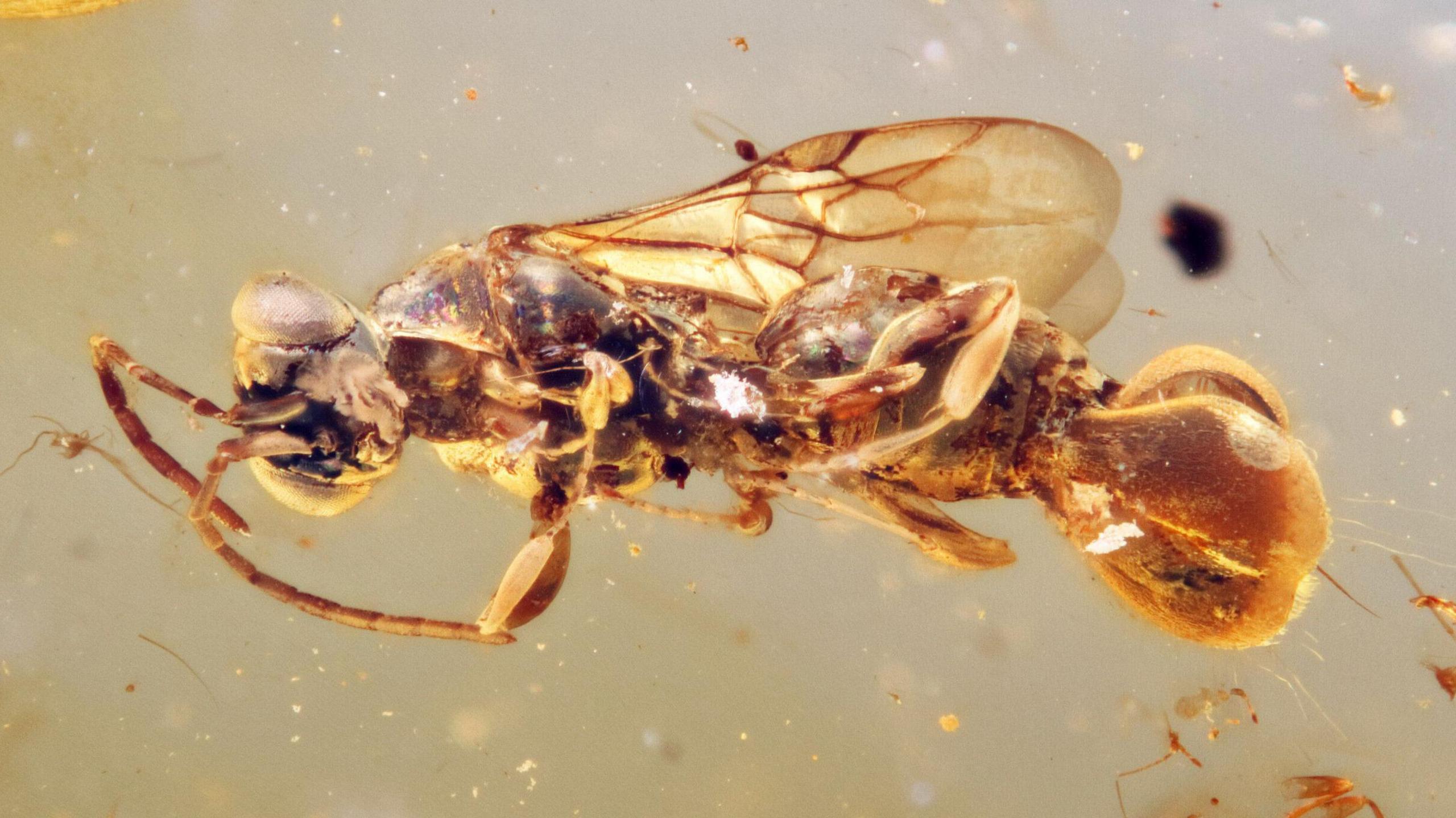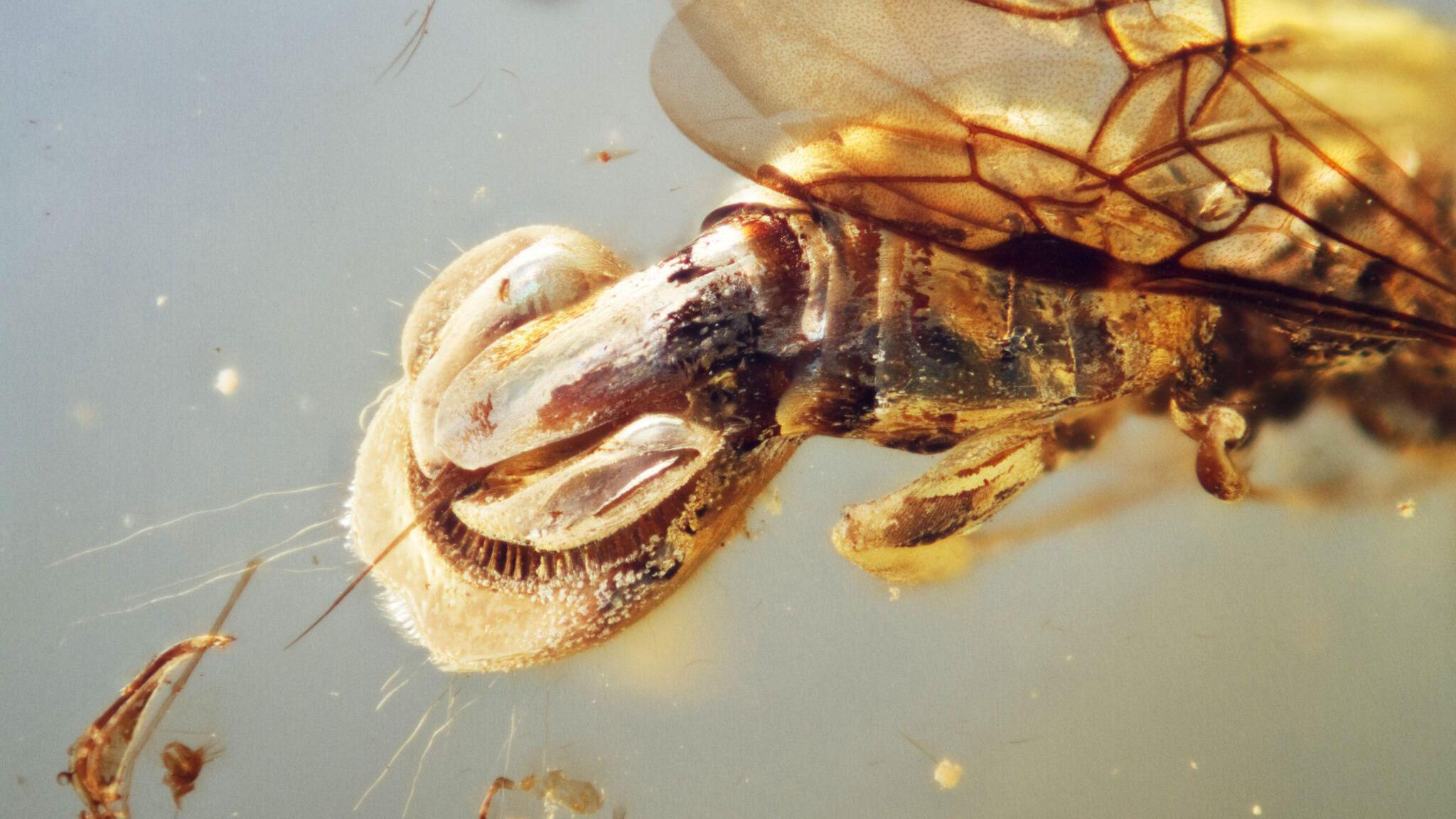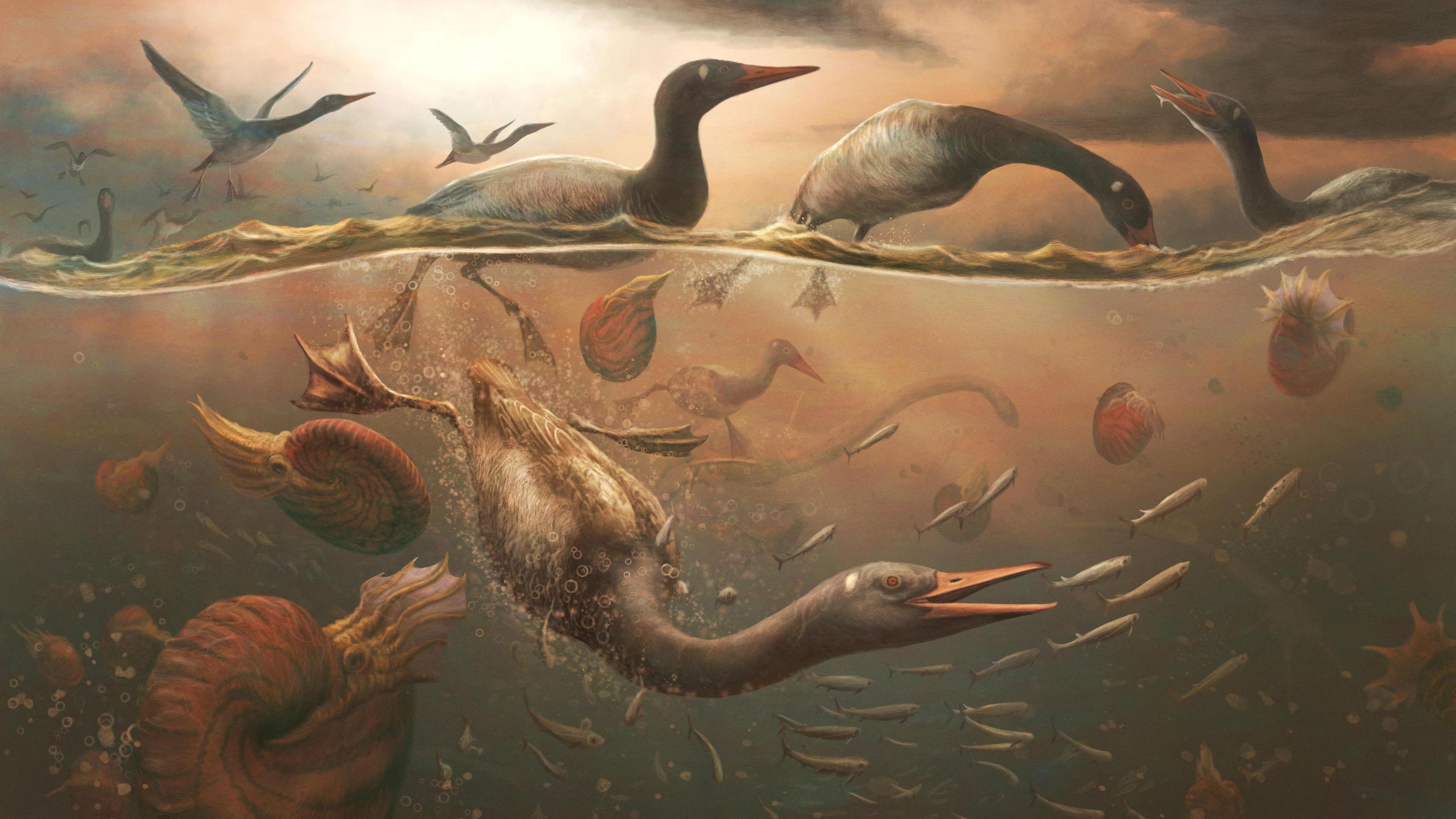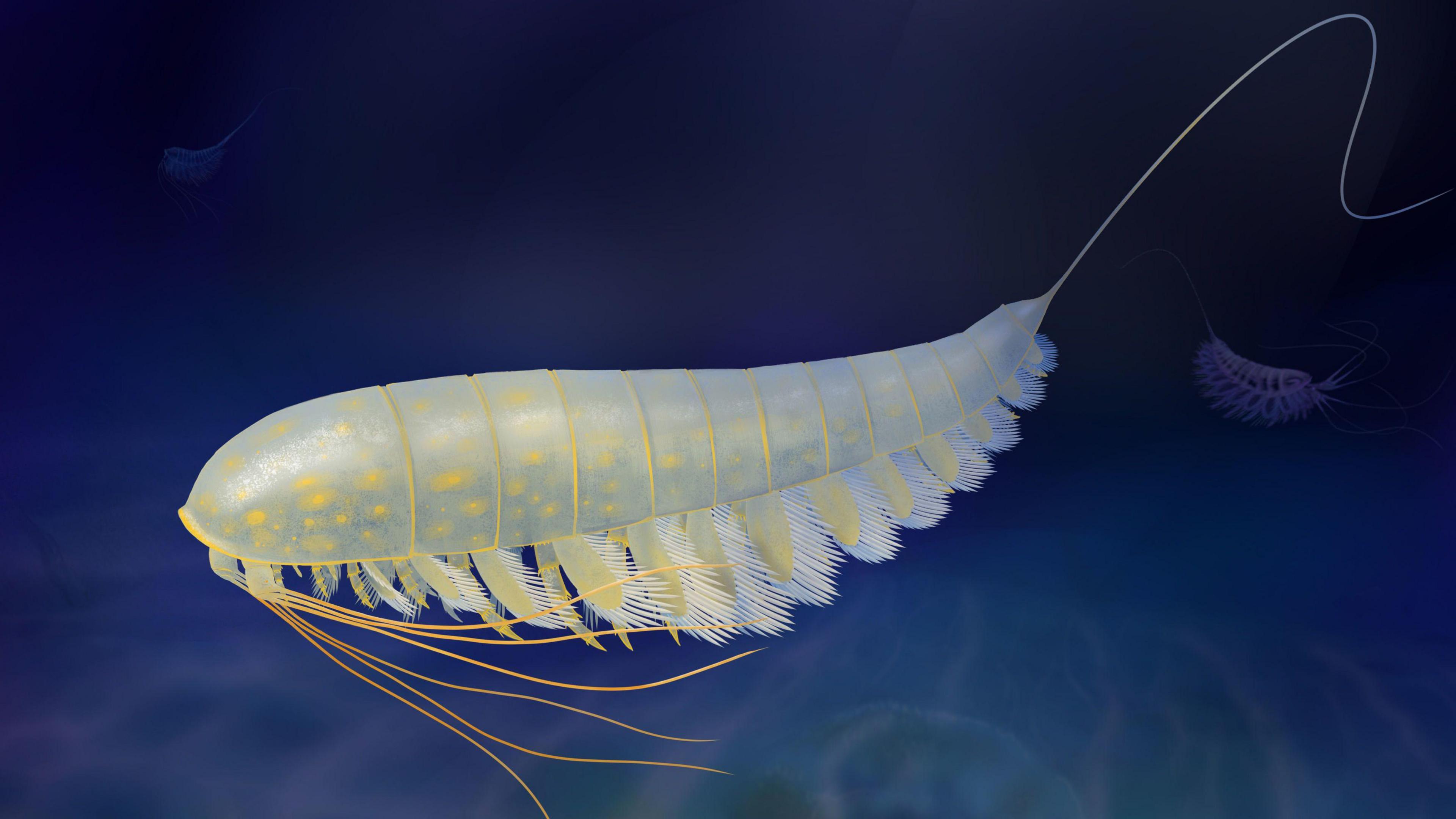Check out this ancient wasp with a flytrap for a bottom

Sirenobethylus charybdis was found preserved in amber
- Published
This might look like the sort of wasp that will ruin your picnic this summer, but it's actually been preserved in amber for 99-million years.
Its back end is very different to the wasps we know today though, looking more like carnivorous plant Venus Fly Trap than a classic stinger.
It's thought the flaps would be help the wasps grab onto another creature and, in a gruesome twist, lay its eggs into it.
Researchers from Capital Normal University in Beijing say "nothing similar is known from any other insect."
More on ancient life
- Published10 March
- Published18 March
- Published20 January

The ancient wasp's rear abdomen is made up of three flaps lined with hairs
The paddle shaped structure is lined with hairs and there are a couple of possible reasons for this.
It could be for the wasp to catch prey or to hold onto a mate, but researchers think it was to help the wasp lay its eggs.
Lead researcher Qiong Wu thinks the wasp was a kionobiont parasite, which means it lays its eggs in the bodies of other live insects or animals and that the flaps would have helped to trap the host while the wasp laid its eggs.
He said: "We imagine it would have waited with the apparatus open, ready to pounce as soon as a potential host activated the capture response."
- Published14 January

- Published7 February

- Published29 October 2024

